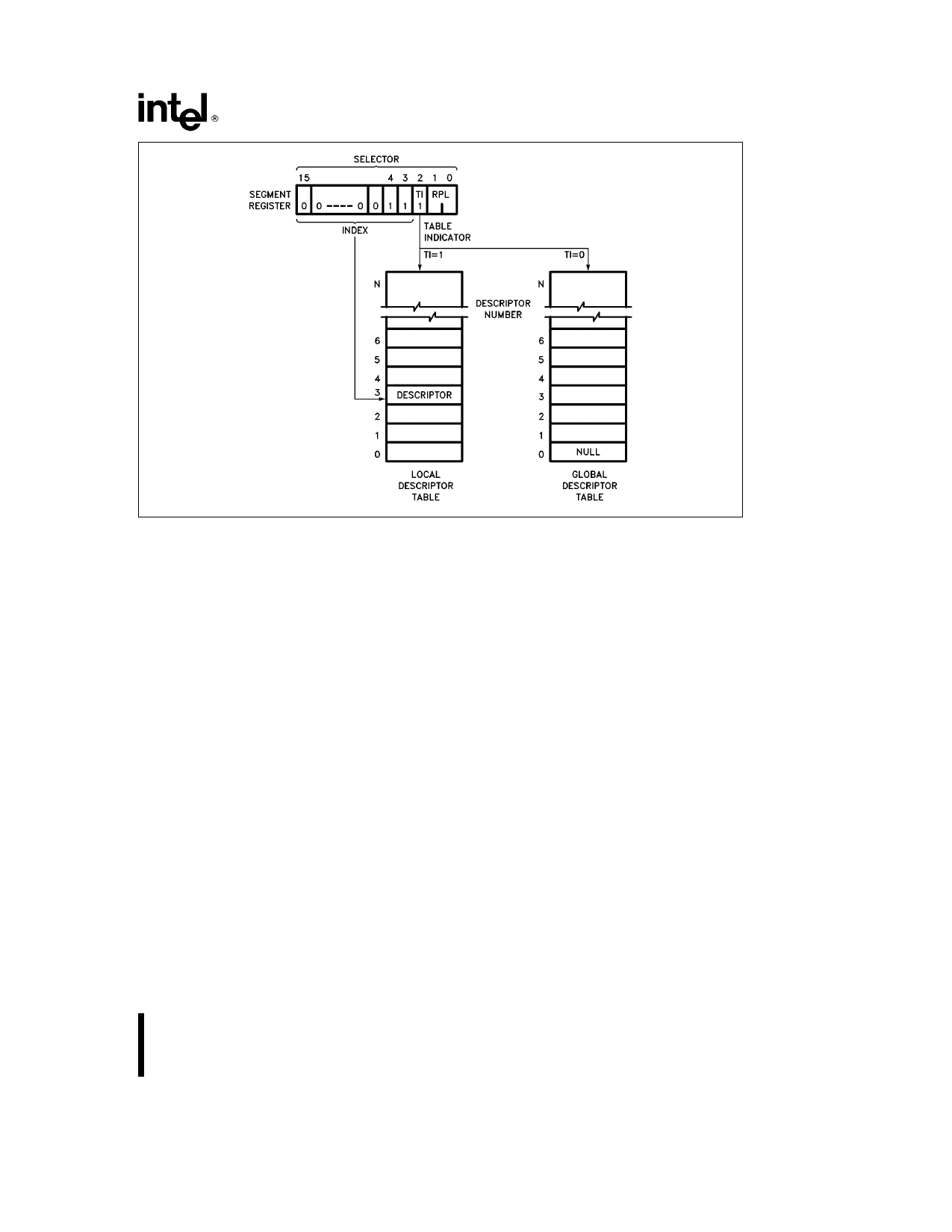INTEL386 Просмотр технического описания (PDF) - Intel
Номер в каталоге
Компоненты Описание
производитель
INTEL386 Datasheet PDF : 102 Pages
| |||

Intel386TM SX MICROPROCESSOR
Figure 4 7 Example Descriptor Selection
240187 – 12
4 3 Protection
The Intel386 SX Microprocessor has four levels of
protection which are optimized to support a multi-
tasking operating system and to isolate and protect
user programs from each other and the operating
system The privilege levels control the use of privi-
leged instructions I O instructions and access to
segments and segment descriptors The Intel386 SX
Microprocessor also offers an additional type of pro-
tection on a page basis when paging is enabled
The four-level hierarchical privilege system is an ex-
tension of the user supervisor privilege mode com-
monly used by minicomputers The user supervisor
mode is fully supported by the Intel386 SX Micro-
processor paging mechanism The privilege levels
(PL) are numbered 0 through 3 Level 0 is the most
privileged level
RULES OF PRIVILEGE
The Intel386 SX Microprocessor controls access to
both data and procedures between levels of a task
according to the following rules
Data stored in a segment with privilege level p
can be accessed only by code executing at a
privilege level at least as privileged as p
A code segment procedure with privilege level p
can only be called by a task executing at the
same or a lesser privilege level than p
PRIVILEGE LEVELS
At any point in time a task on the Intel386 SX Micro-
processor always executes at one of the four privi-
lege levels The Current Privilege Level (CPL) speci-
fies what the task’s privilege level is A task’s CPL
may only be changed by control transfers through
gate descriptors to a code segment with a different
privilege level Thus an application program running
at PLe3 may call an operating system routine at
PLe1 (via a gate) which would cause the task’s CPL
to be set to 1 until the operating system routine was
finished
Selector Privilege (RPL)
The privilege level of a selector is specified by the
RPL field The selector’s RPL is only used to estab-
lish a less trusted privilege level than the current
privilege level of the task for the use of a segment
This level is called the task’s effective privilege level
(EPL) The EPL is defined as being the least privi-
leged (numerically larger) level of a task’s CPL and a
selector’s RPL The RPL is most commonly used to
verify that pointers passed to an operating system
procedure do not access data that is of higher privi-
lege than the procedure that originated the pointer
Since the originator of a selector can specify any
RPL value the Adjust RPL (ARPL) instruction is pro-
vided to force the RPL bits to the originator’s CPL
29